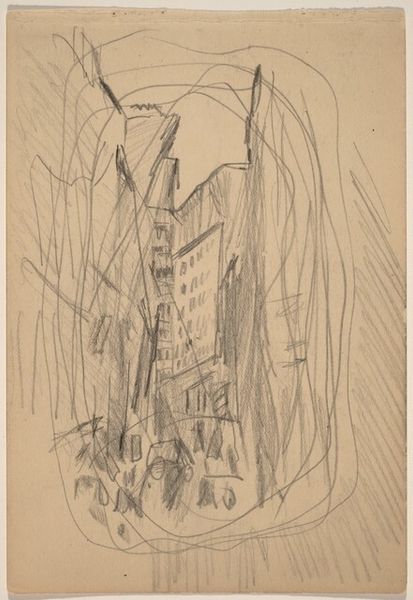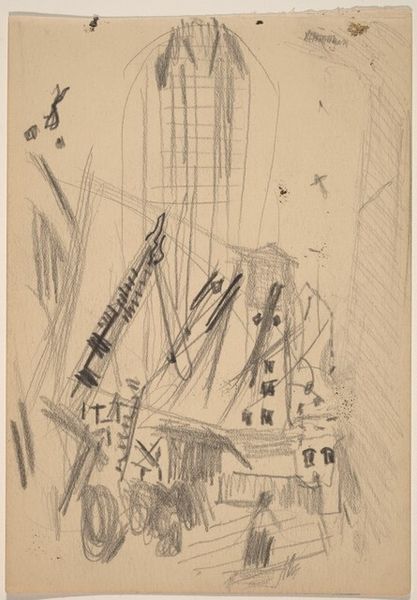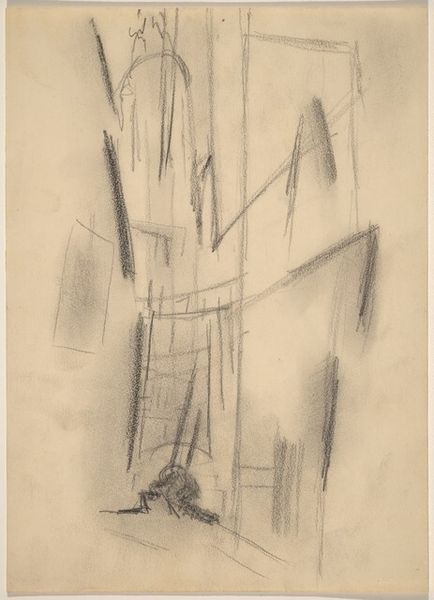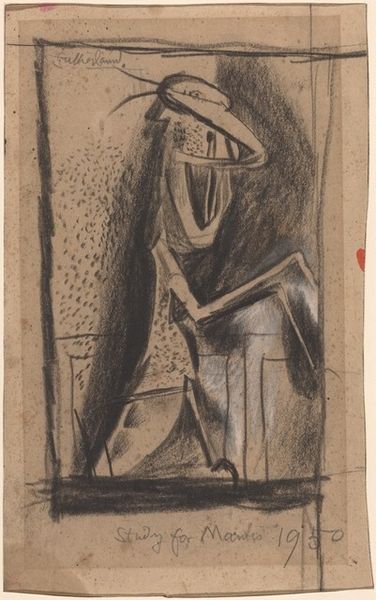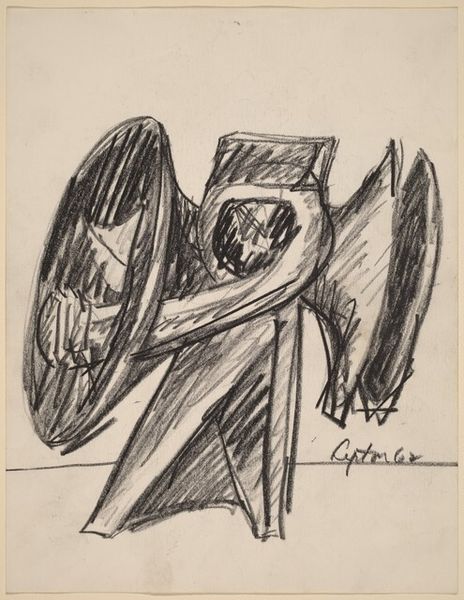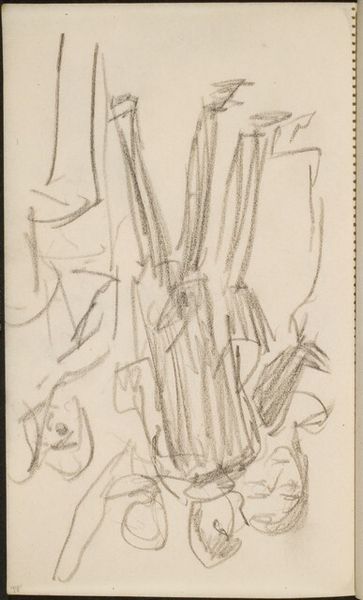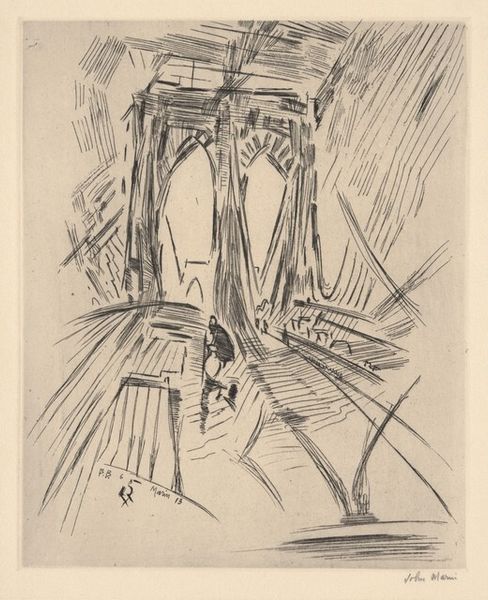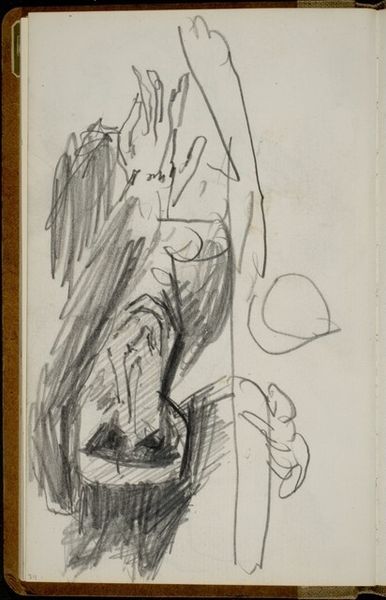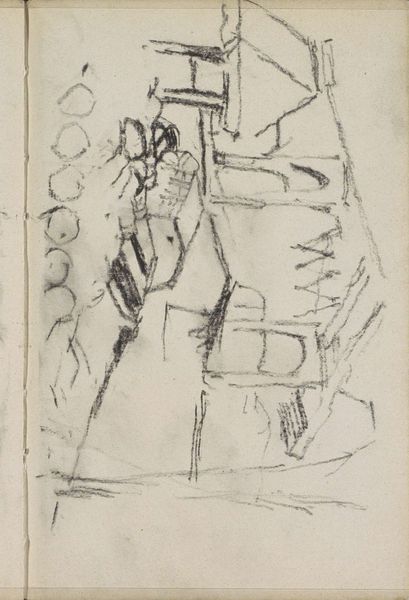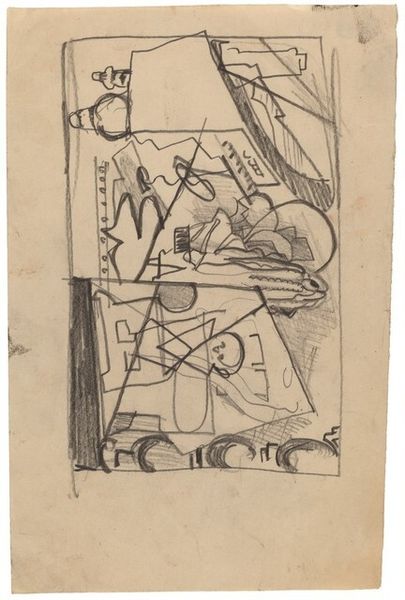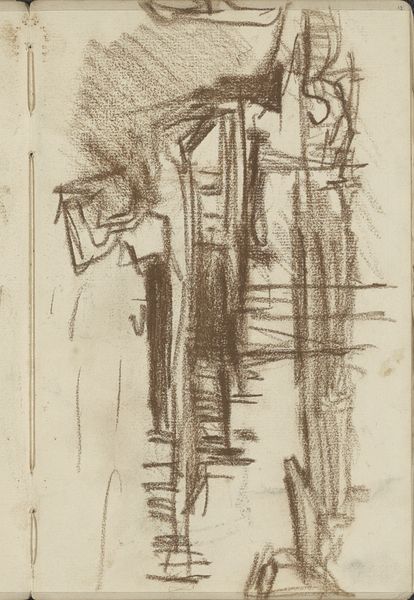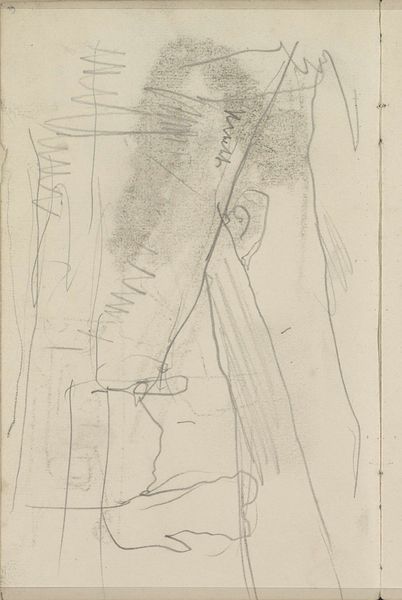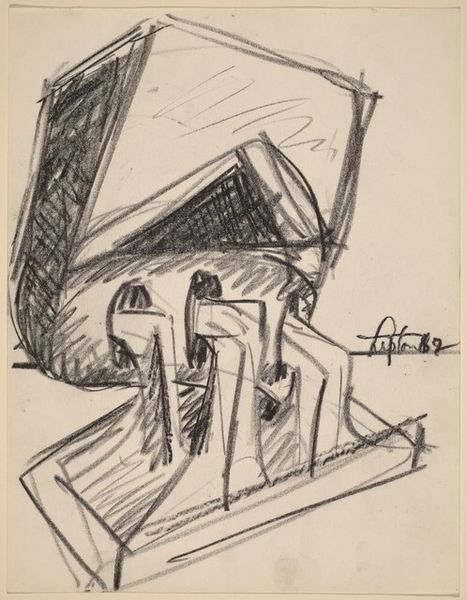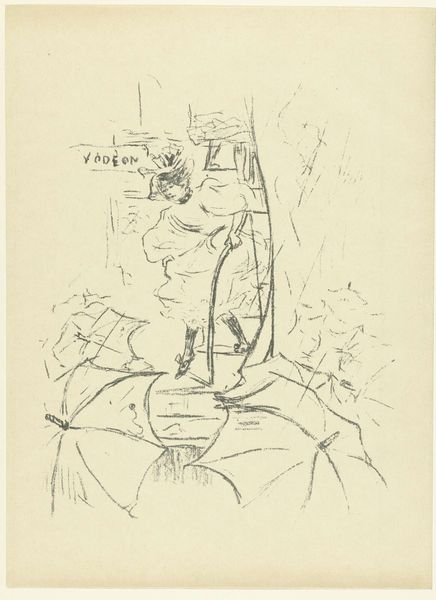![Untitled [New York City] [recto] by John Marin](/_next/image?url=https%3A%2F%2Fd2w8kbdekdi1gv.cloudfront.net%2FeyJidWNrZXQiOiAiYXJ0ZXJhLWltYWdlcy1idWNrZXQiLCAia2V5IjogImFydHdvcmtzL2ZlNTk2ZjM2LWYxOGUtNDFjZC05YmJlLTE0MjE5OThkNDI4NC9mZTU5NmYzNi1mMThlLTQxY2QtOWJiZS0xNDIxOTk4ZDQyODRfZnVsbC5qcGciLCAiZWRpdHMiOiB7InJlc2l6ZSI6IHsid2lkdGgiOiAxOTIwLCAiaGVpZ2h0IjogMTkyMCwgImZpdCI6ICJpbnNpZGUifX19&w=1080&q=75)
drawing, pencil
#
drawing
#
geometric
#
pencil
#
abstraction
#
cityscape
#
modernism
Dimensions: overall: 16 x 11.4 cm (6 5/16 x 4 1/2 in.)
Copyright: National Gallery of Art: CC0 1.0
Curator: This piece, an untitled pencil drawing by John Marin, depicts New York City in a rather dynamic way. Editor: My first impression is controlled chaos. It feels almost as if the city itself is vibrating, ready to spring from the page. What sort of paper would Marin have used, and did the choice reflect his urban subject matter? Curator: That's an interesting angle. He more than likely used readily available sketching paper of the time; examining his technique—the forceful, rapid lines and overlapping forms—is more enlightening. Consider this drawing not simply as a picture *of* New York, but also as a product *of* New York's frenetic energy, channeled through the artist. Editor: The art market certainly shaped perceptions of the cityscape genre and what was deemed "high art" and "mere" drawing. And I wonder how exhibitions that included similar sketches, would impact public appreciation for everyday subject matter... Curator: Absolutely. The urban sketch gained prominence in relation to developments like the rise of mass-produced art supplies. Marin himself likely benefitted from new access to materials that democratized the creation of art. Editor: These quick pencil drawings were part of shaping a visual rhetoric of modernism, echoing architectural forms like skyscrapers and capturing an overwhelming urban environment that has a complicated relationship with citizens: on the one hand enabling a social sphere, and, on the other, rendering individuals invisible, alienated within mass society. The style is deliberately jarring. Curator: And that connects, perhaps, with what’s going on socially in New York itself. Think about immigration at the time, the rise of industry, how architecture and materials themselves were transformed by forces of urbanization. All those intersecting lines – economic, social, infrastructural - are right there in this drawing. Editor: A drawing can serve as an invaluable historical artifact of modernity itself and the rise of urban centers. Even something as seemingly mundane as its materials helps reveal art’s relationship to larger forces of industrialization. Curator: Precisely! This drawing really pulls back the curtain on that relationship between art, the built environment, and the technologies shaping everyday life.
Comments
No comments
Be the first to comment and join the conversation on the ultimate creative platform.
